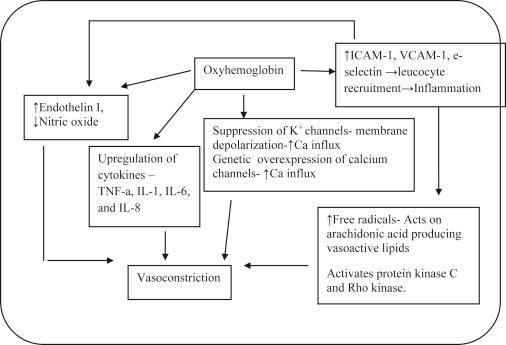Physical Address
304 North Cardinal St.
Dorchester Center, MA 02124
Cerebral vasospasm implies narrowing of blood vessels resulting in decreased cerebral blood flow to distal tissues resulting in ischemia. It has been variously defined in the literature by different authors:
Clinical vasospasm defined as neurological deterioration deemed secondary to vasospasm after other causes are eliminated. It is seen in 20–40% of patients.
Delayed cerebral ischemia (DCI) defined as clinically symptomatic vasospasm or infarction on computed tomography (CT) attributable to vasospasm.
Angiographic vasospasm defined as moderate-to-severe arterial narrowing on digital subtraction angiography not attributable to atherosclerosis, catheter-induced spasm, or vessel hypoplasia. About 70% of patients may have angiographic narrowing but clinically may not be evident in all.
Transcranial Doppler (TCD) spasm , defined as any mean flow velocity >120 cm/s.
It occurs mostly between 3 and 21 days post hemorrhage. The arteries have thin adventitia through which blood breakdown products reach tunica media and cause vasoconstriction ( Figure 1 ).

The various possible mechanisms involved are:
Neuronal apoptosis
Scavenging or decreased production of nitric oxide (NO)
Increased endothelin 1 levels
Direct oxidative stress on smooth muscle cells
Free radical production and lipid peroxidation of cell membranes
Modification of potassium and calcium channels
Rho kinase induced proliferation and growth of vascular smooth muscle cells
Ischemia producing cortical spreading depolarization
Overexpression of genes
Become a Clinical Tree membership for Full access and enjoy Unlimited articles
If you are a member. Log in here